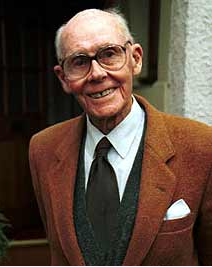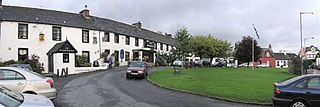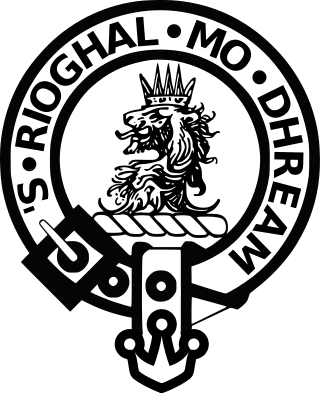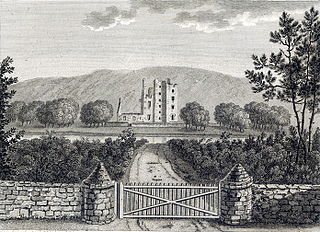
Nigel Tranter OBE was a writer of a wide range of books on castles, particularly on themes of architecture and history. He also specialised in deeply researched historical novels that cover centuries of Scottish history.

The House of Stuart, originally spelled Stewart, was a royal house of Scotland, England, Ireland and later Great Britain. The family name comes from the office of High Steward of Scotland, which had been held by the family progenitor Walter fitz Alan. The name Stewart and variations had become established as a family name by the time of his grandson Walter Stewart. The first monarch of the Stewart line was Robert II, whose male-line descendants were kings and queens in Scotland from 1371, and of England, Ireland and Great Britain from 1603, until 1714. Mary, Queen of Scots, was brought up in France where she adopted the French spelling of the name Stuart.

Callander is a small town in the council area of Stirling, Scotland, situated on the River Teith. The town is located in the historic county of Perthshire and is a popular tourist stop to and from the Highlands.

Roy Castle was an English dancer, singer, comedian, actor, television presenter and musician. In addition to being an accomplished jazz trumpet player, he could play many other instruments. Following a versatile career as a performer on stage, television and film, he became best known to British television viewers as the long-running presenter of the children's series Record Breakers.

Robert Roy MacGregor was a Scottish outlaw, who later became a folk hero.

Rob Roy is a 1995 historical biographical drama film directed by Michael Caton-Jones. It stars Liam Neeson as Rob Roy MacGregor, an 18th-century Scottish clan chief becomes engaged in a dispute with a reprobate nobleman in the Scottish Highlands, played by John Hurt. Tim Roth won the BAFTA Award for Best Actor in a Supporting Role and was nominated for the Academy Award for Best Supporting Actor for his portrayal of Archibald Cunningham, one of Rob Roy's chief antagonists. Jessica Lange portrays Roy's wife, and Eric Stoltz, Brian Cox, and Jason Flemyng play supporting parts.

Drymen is a village in the Stirling district of central Scotland. Once a popular stopping place for cattle drovers, it is now favored by visiting tourists given its location near Loch Lomond. The village is centred around a village green, which is an unusual feature in Scottish villages but more common in other parts of the United Kingdom.

Clan Mackay is an ancient and once-powerful Highland Scottish clan from the far North of the Scottish Highlands, but with roots in the old Kingdom of Moray.

Ayton is a small village located in the historic county of Berwickshire, today part of the Scottish Borders region. It is on the Eye Water, from which it is said to take its name: Ayton means 'Eye-town'. It contains the former ancient tollbooth or town hall with a clock tower, the Hemelvaart Bier Cafe and a village store.

Mons Meg is a medieval bombard in the collection of the Royal Armouries, on loan to Historic Environment Scotland and located at Edinburgh Castle in Scotland. It has a barrel diameter of 20 inches (510 mm), making it one of the largest cannons in the world by calibre.

Clan Gregor, also known as Clan MacGregor, is a Highland Scottish clan that claims an origin in the early 9th century. The clan's most famous member is Rob Roy MacGregor of the late 17th and early 18th centuries. The Clan is also known to have been among the first families of Scotland to begin playing the bagpipes in the early 17th century.

Finlarig Castle is an early 17th-century castle standing on a mound on a peninsula between the River Lochay and Loch Tay, just over 1⁄2 mile (0.80 km) north of Killin in Stirling, Scotland.

Rough Castle Fort is a Roman fort on the Antonine Wall roughly 2 kilometres south east of Bonnybridge near Tamfourhill in the Falkirk council area, Scotland. It is owned by the National Trust for Scotland.

The old Barony and castle of Corsehill lay within the feudal Baillerie of Cunninghame, near Stewarton, now East Ayrshire, Scotland.

Clan Stewart is a Scottish Highland and Lowland clan. The clan is recognised by Court of the Lord Lyon; however, it does not have a Clan Chief recognised by the Lord Lyon King of Arms. Because the clan has no chief it can be considered an armigerous clan; however, the Earls of Galloway are now considered to be the principal branch of this clan, and the crest and motto of The Earls of Galloway's arms are used in the Clan Stewart crest badge. The Court of the Lord Lyon recognises two other Stewart/Stuart clans, Clan Stuart of Bute and Clan Stewart of Appin. Clan Stuart of Bute is the only one of the three clans at present which has a recognised chief.

The Antonine Wall was a turf fortification on stone foundations, built by the Romans across what is now the Central Belt of Scotland, between the Firth of Clyde and the Firth of Forth. Built some twenty years after Hadrian's Wall to the south, and intended to supersede it, while it was garrisoned it was the northernmost frontier barrier of the Roman Empire. It spanned approximately 63 kilometres and was about 3 metres high and 5 metres wide. Lidar scans have been carried out to establish the length of the wall and the Roman distance units used. Security was bolstered by a deep ditch on the northern side. It is thought that there was a wooden palisade on top of the turf. The barrier was the second of two "great walls" created by the Romans in Great Britain in the second century AD. Its ruins are less evident than those of the better-known and longer Hadrian's Wall to the south, primarily because the turf and wood wall has largely weathered away, unlike its stone-built southern predecessor.

Castle Kennedy is a small village 3 miles (4.8 km) east of Stranraer in Dumfries and Galloway, south-west Scotland. It is on the A75 road, and is within the civil parish of Inch. The village is to the south of the Lochinch Castle estate, which includes the ruins of the 17th-century Castle Kennedy, as well as Castle Kennedy Gardens which are open to the public.

Clan Cumming, also known as Clan Comyn, is a Scottish clan from the central Highlands that played a major role in the history of 13th-century Scotland and in the Wars of Scottish Independence. The Clan Comyn was once the most powerful family in 13th-century Scotland, until they were defeated in civil war by their rival to the Scottish throne, Robert the Bruce.
Events from the year 1715 in Scotland.

The Battle of Torran-Roy was a Scottish clan battle that took place in the year 1570 in the county of Sutherland, Scotland. It was fought between the forces of Alexander Gordon, 12th Earl of Sutherland and the forces of George Sinclair, 4th Earl of Caithness. The Earl of Sutherland's force consisted primarily of the Murrays of Aberscross who despite their name were not part of the Clan Murray in Atholl, but who were a sept of the Clan Sutherland, and who as the principal vassals of the Earl of Sutherland, were charged with the defense of the shire. The Earl of Caithness's forces consisted primarily of followers of Alexander Sutherland, 8th of Duffus who was a descendant of the old Sutherland Earls of Sutherland who had been ousted and replaced by the Gordons as earls in the early 16th-century.



















